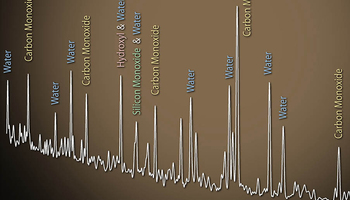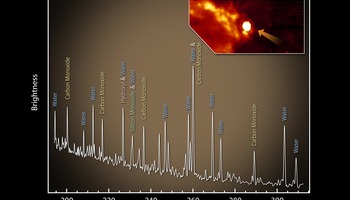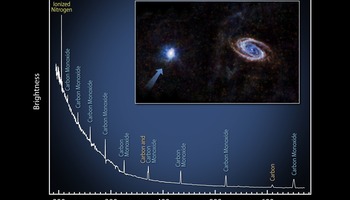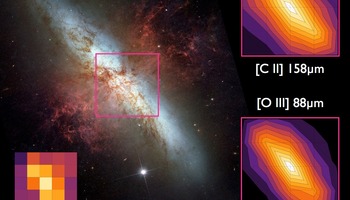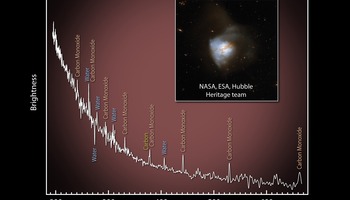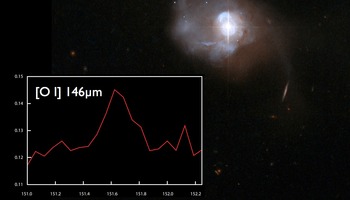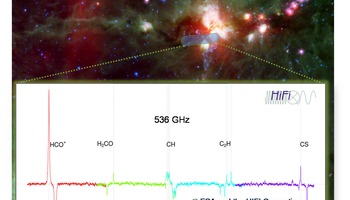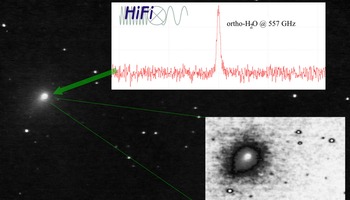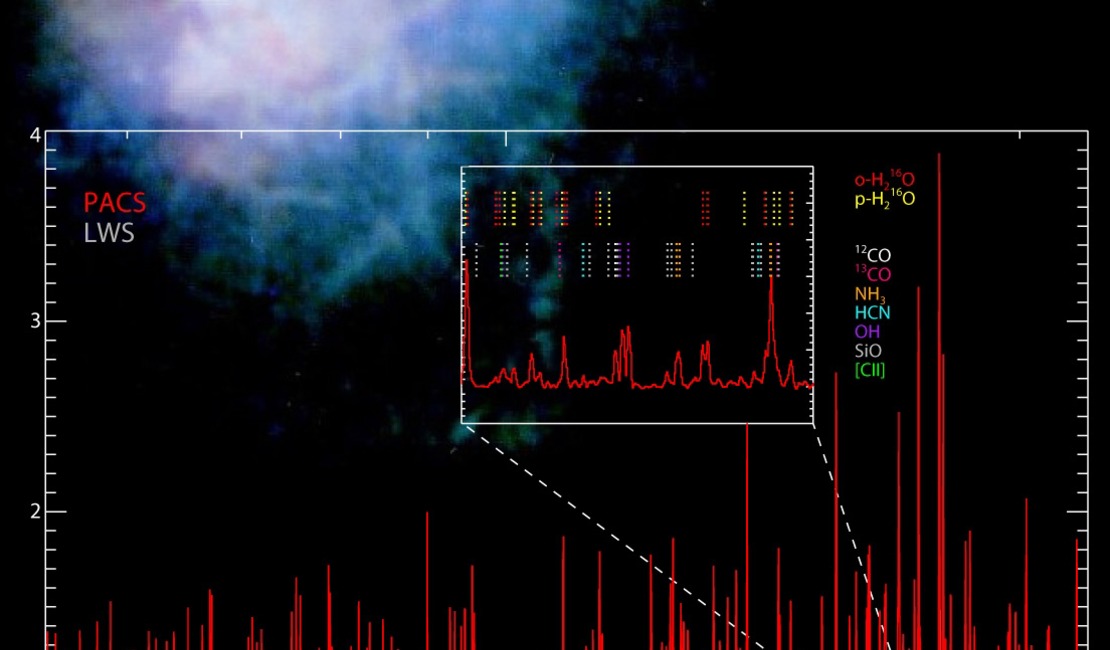
PACS spectrum of VY Canis Majoris
This is one of the early spectra obtained with the PACS integral field spectrometer on Herschel. Shown here (in red) is the spectrum of the red supergiant VY CMa between 50 and 210 micron. Depicted in gray, and offset by -0.5, is the observation from the ISO Long Wavelength Spectrometer (LWS). The inset shows a zoom into the 156 to 172 micrometer wavelength range. In this short wavelength region, 44 different molecular lines are identified (indicated by coloured thick marks).
In the background is an optical and near-infrared image from the Hubble Space Telescope.
VY Canis Majoris (VY CMa) is a red supergiant star located about 4900 light years from Earth in the constellation Canis Major. It is the largest known star, with a size of 2600 solar radii, and also one of the most luminous, with a luminosity in excess of 100 000 times that of the Sun. The mass of VY CMa lies in the range 30-40 solar masses, and it has a mass-loss rate of 2x10-4 solar masses per year.
The shell of gas it has ejected displays a complex structure; the circumstellar envelope is among the most remarkable chemical laboratories known in the Universe, creating a rich set of organic and inorganic molecules and dust species. Through stellar winds, these inorganic and organic compounds are injected into the interstellar medium, from which new stars orbited by new planets may form. Most of the carbon supporting life on Earth was forged by this kind of evolved star. VY CMa truly is a spectacular object, it is close to the end of its life and could explode as a supernova at any time.
This PACS observation was carried out as part of the performance verification of the observatory. The scientific rights of this observation are owned by the Mass Loss of Evolved Stars (MESS) Key Programme consortia, led by M. Groenewegen.
Image Details
- Date
- November 27, 2009
- ID
- nhsc2009-021b
- Type
- Chart
- Credit
- ESA/NASA/JPL-Caltech


